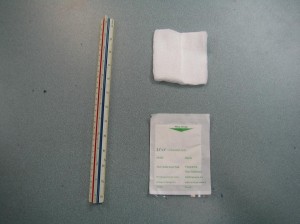Cardiac arrest in children is very different from arrest in children. In adults, cardiac arrests are commonly caused by lifestyle-related risk factors and conditions, such as coronary artery disease and hypertension. In children, cardiac arrests are typically respiratory in nature. This means that a respiratory problem that ends in respiratory failure greatly increases the chance of a child to have a heart attack and go into cardiac arrest.
Respiratory failure in Children
One of the most common reasons why children are hospitalized is respiratory problems. Asthma and pneumonia are the most common reasons why very young children are brought to the emergency room. This is because children have generally weaker and more immature respiratory and immune systems, which cannot withstand microorganisms that the adult systems can typically fight off. More often than not, children whose conditions cannot be managed end up experiencing respiratory failure.
What causes respiratory failure?
When children experience inadequate ventilation or insufficient oxygenation (or both), he or she can suddenly experience respiratory failure. The early signs and symptoms typically manifest as the following:
- Increase in respiratory rate. The normal rate is 12 – 21 in a minute. Any faster than that and it is considered tachypnea (fast respiration).
- Poor rate, effort, and chest excursion. This is usually characterized by nasal flaring, chest retractions, see saw breathing, and grunting.
- Cyanosis (blue tinge to the skin, especially the mucosal membranes) despite supplementary oxygen.
CPR tips for Pediatric Victims

Giving CPR to children is very different from giving CPR to an adult. Infants and toddlers are very small, so compression depth must be adjusted in order to prevent injury and trauma to the chest. For infants, two fingers are used to depress the chest by approximately 1.5 inches. Two fingers – meaning two thumbs with hands around the chest, or the pointer and middle fingers. For slightly older children, one hand can be used to compress the chest at the same depth. The rule for compression is to depress the chest by a third of the anterior-posterior diameter.
- Compression rate – 1oo a minute
- Compression:ventilation ratio- 30:2
- Ventilations are just as important as compressions in children
The PALS program
The Pediatric Advanced Life Support program lasts two days, and in 14 hours. It focuses on pediatric medical management, including administration of medicine and set up of medical equipment. The structure of the curriculum is the same as ACLS (for adult management), but the focus on the management of children, specifically infants, toddlers, and very young children.
We give students who are able to complete the PALS program a PALS training certificate. It is valid for 2 years before it needs to be renewed (possible through our PALS re-certification class). PALS re-certification is either 6 hours and 20 minutes or 8 hours and 20 minutes. If your certificate has expired before you have a chance to renew it, you have to sign up for the PALS program again.
